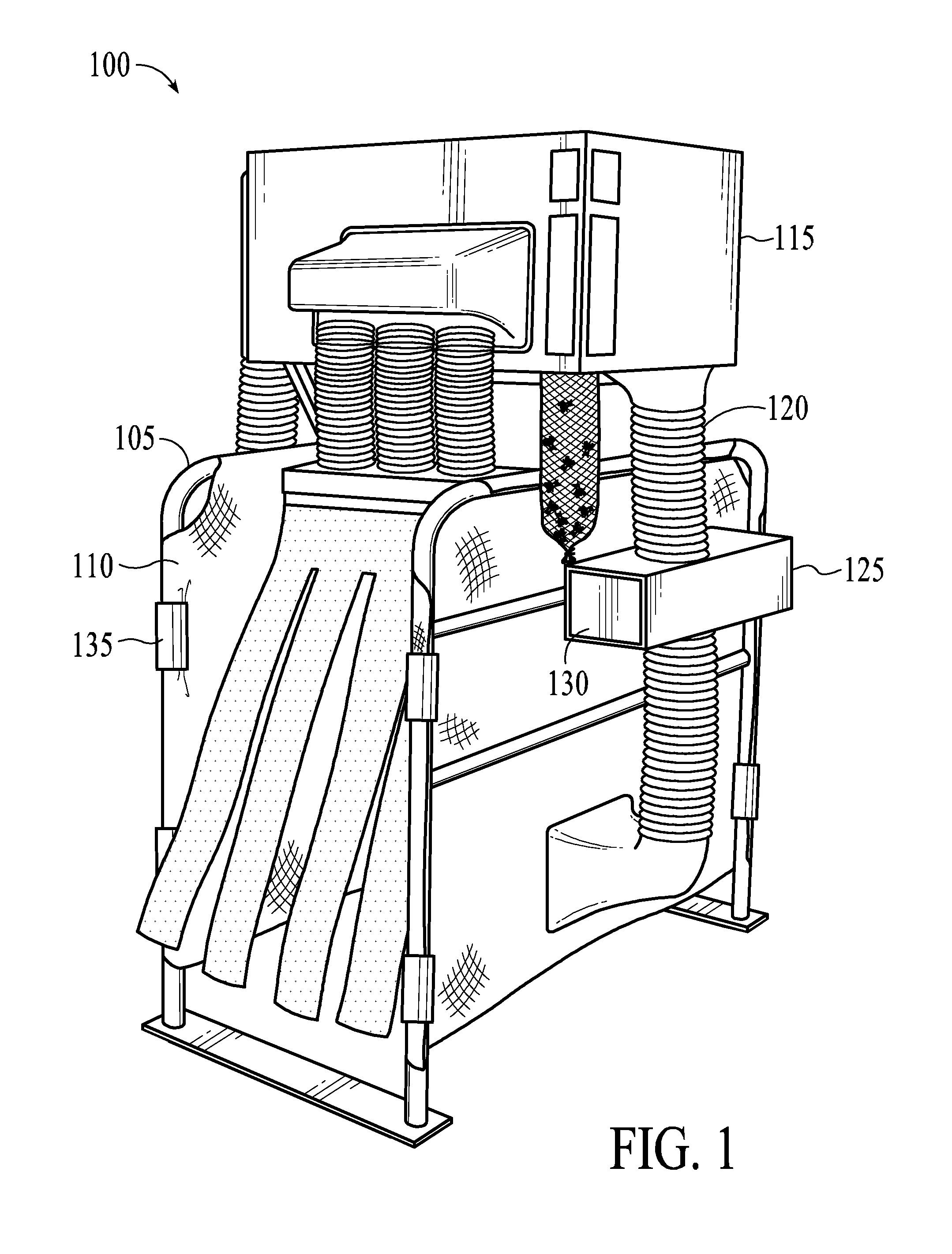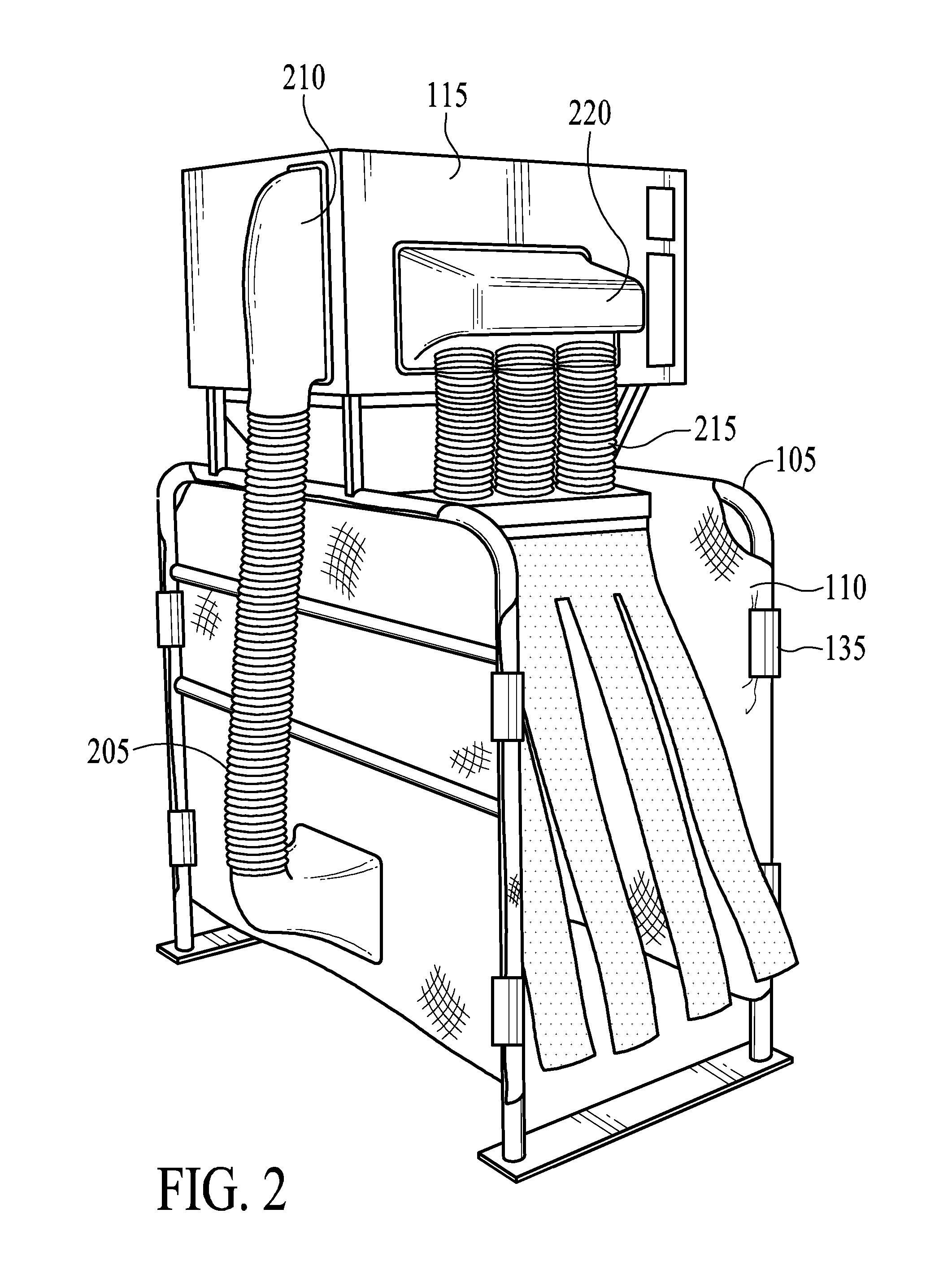Livestock insect-removal systems and related methods
a technology for livestock and insect removal, applied in the field of insect control, can solve the problems of most economically damaging livestock pests, horn fly is a persistent pest of livestock, costing the cattle industry approximately $876 million per year in lost production, etc., and achieve the effect of restricting airflow
- Summary
- Abstract
- Description
- Claims
- Application Information
AI Technical Summary
Benefits of technology
Problems solved by technology
Method used
Image
Examples
Embodiment Construction
[0025]The present invention provides exemplary systems and methods for livestock insect removal. In exemplary embodiments, the insect removal system comprises a structure with a path for livestock to pass through.
[0026]FIG. 1 depicts a view of an exemplary embodiment of a livestock insect removal system 100. A structure 105 comprises a path for livestock to pass through. The structure 105 may be comprised of PVC, wood, metal, or other similar sturdy material. For example, the frame of the structure 105 may comprise tubular metal supports as depicted in FIG. 1. Optionally, the portions of the structure 105 comprising sides of the path may be covered to prevent the escape of insects dislodged from livestock. A covering 110 material may be comprised of mesh, screens, fabric, plastic, canvas, vinyl, wood, metal or other similar materials. The covering 110 may be attached to the structure 105 using clips 135. Optionally, alternative attachments such as ties, screws, bolts, welds, other s...
PUM
 Login to View More
Login to View More Abstract
Description
Claims
Application Information
 Login to View More
Login to View More - R&D
- Intellectual Property
- Life Sciences
- Materials
- Tech Scout
- Unparalleled Data Quality
- Higher Quality Content
- 60% Fewer Hallucinations
Browse by: Latest US Patents, China's latest patents, Technical Efficacy Thesaurus, Application Domain, Technology Topic, Popular Technical Reports.
© 2025 PatSnap. All rights reserved.Legal|Privacy policy|Modern Slavery Act Transparency Statement|Sitemap|About US| Contact US: help@patsnap.com



